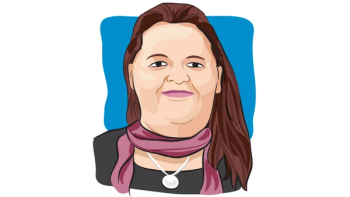
An Oncologist Explains How She Uses ctDNA in Gastric Cancer
Circulating tumor DNA can be a valuable tool in gastric cancer, but unanswered questions remain, an expert said.
Circulating tumor DNA (ctDNA), describes the cancer fragments that can be detected in a patient’s bloodstream. While the role of ctDNA has not definitively been outlined in the gastric cancer space, it can help guide treatment decisions.
At the 2024
READ MORE:
Transcript
ctDNA technology is very promising in the field, although it's not fully validated at this time. There are a lot of clinical trials that are investigating how we can alter treatment based on the presence of a positive ctDNA or even a negative ctDNA results.
So ctDNA is circulating tumor DNA, and it can detect DNA cancer DNA at a level that scans may not be able to or more conventional cancer antigens in the blood may not be able to detect.
How I use it is really personalized based on each patient. So, say someone goes through neoadjuvant therapy for gastric or esophageal cancer but is very hesitant about going through surgery. But the scan shows that there's a radiologic complete response. Sometimes I'll use ctDNA there just to track what I think is going to be microscopic cancer in their body. If it stays negative or is at a very low level and statelet low level, I may not initiate more chemotherapy or immunotherapy. But if it slowly becomes positive over time, then I know I need to watch that patient more carefully doing scans on a more frequent basis, because I have a high suspicion that we're going to start seeing that that cancer on the scan for patients with advanced disease.
Sometimes I will also use ctDNA just to track certain mutations to see if over time we're seeing more of that mutation in the tumor and trying to tailor it to a more personalized treatment approach.
For more news on cancer updates, research and education, don’t forget to





